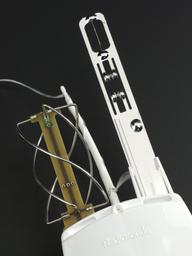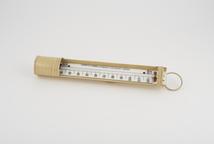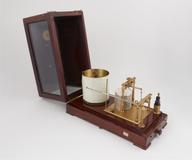

Floating barograph, or self-registering barometer, designed by Alfred King, Liverpool, 1862. The instrument was operated at Liverpool Observatory, Bidston Hill, between 1863 and February 1940. The barometer tube is counterpoised to float in the cast iron cistern, which would have contained mercury when the instrument was operational. When atmospheric pressure falls, the tube rises and causes the frame, which would carry a pencil, to fall. The pencil thus inscribes a continuous record of atmospheric pressure onto a recording cylinder, rotated by clockwork. The record was magnified so that a change of pressure over 1 inch of mercury caused a change of 5 inches on the recording chart.
Liverpool-based engineer Alfred King designed this self-registering barometer, or barograph, which could inscribe a continuous record of atmospheric pressure onto a recording cylinder. While some self-registering instruments at the time used photographic recording mechanisms, King believed his design would be simpler to use, not requiring the skilled manipulation demanded by photographic instruments. The barometer tube was 'floated' in a mercury-containing cistern, and was designed to rise and fall as atmospheric pressure fluctuated. The instrument required over 80 lbs (36 kg) of mercury to operate.
Details
- Category:
- Meteorology
- Object Number:
- 1940-14
- Materials:
- glass, cast iron, brass (copper, zinc alloy), paper (fibre product), steel (metal), iron and gunmetal
- Measurements:
-
overall (estimate): 2400 mm
- type:
- barograph
- credit:
- Liverpool Observatory & Tidal Institute




